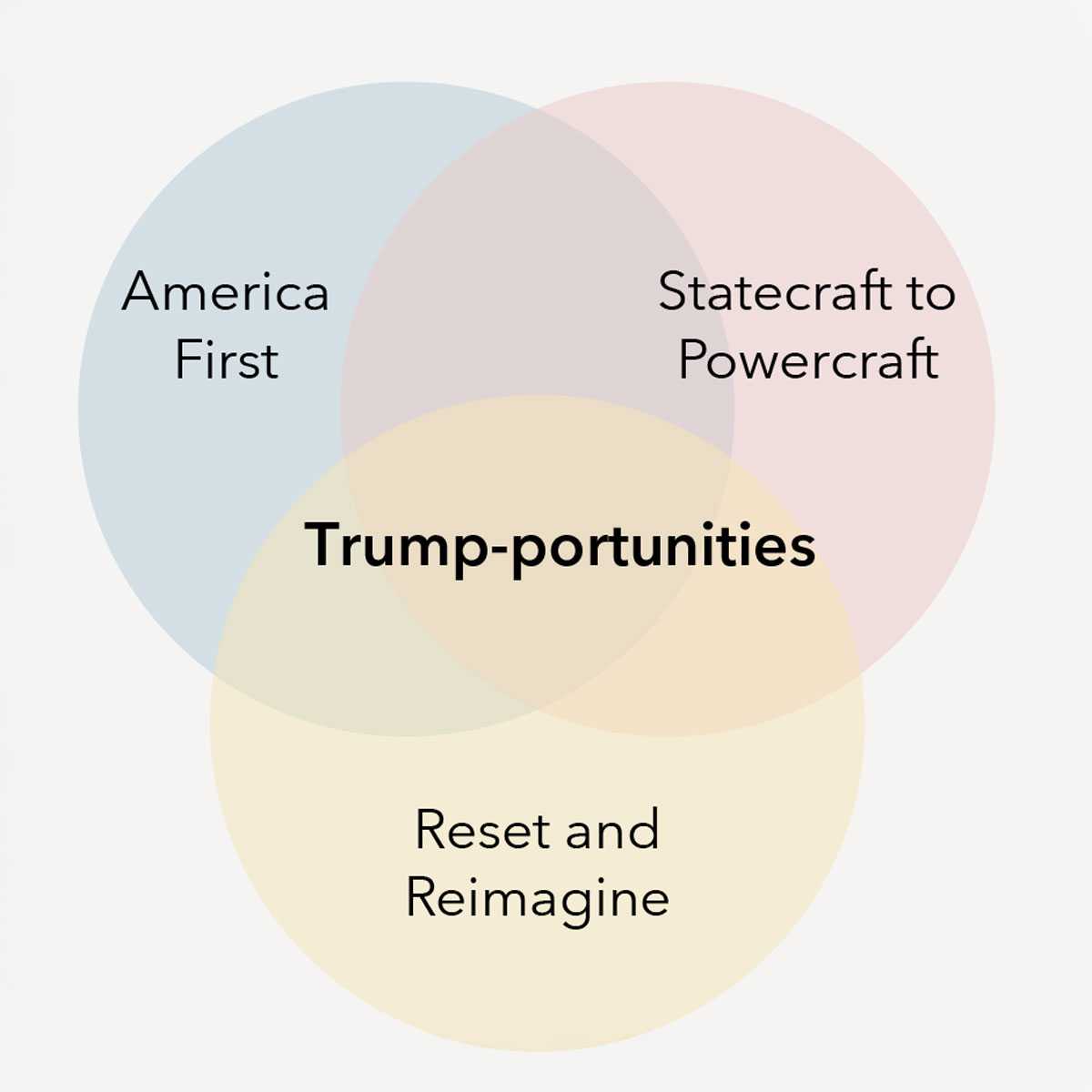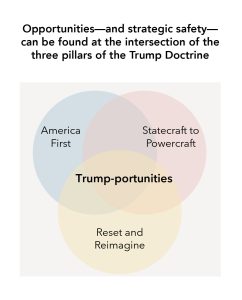
From Shock to Strategy: Finding Opportunity as the Trump Doctrine Reshapes the World Order
April 2, 2025
Get APCO’s full analysis of these issues in the latest edition of the APCO Geopolitical Radar.
The first 70 days of the second Trump administration have revealed a framework for how the 47th U.S. president wants to reshape the world and how he will pursue his agenda. The president’s rapid-fire actions have caused confusion, shock and awe, destabilized America’s friends and foes and created a new environment where seemingly nothing is off the table.
While many investors, citizens and institutions are disoriented, early signposts give direction on how to proceed in this unfamiliar environment. By understanding the three pillars to the Trump Doctrine, businesses can make informed decisions about how to proceed and perhaps thrive in this new era.
 America First
America FirstThe administration is guided and energized by an authentic perception that the American people—particularly working people in neglected “flyover” country—have been cheated by decades of what they see as liberal excesses and self-serving, out-of-touch elites. This is characterized by a belief in the much-touted harms caused by globalization, America’s unfair trading relationships, offshoring of manufacturing jobs, U.S. underwriting European and North Asian security, uncontrolled immigration, adherence to so-called “woke” ideas such as DEI and ESG and accusations of unchecked waste, fraud and abuse by a bloated and ineffective government bureaucracy.
President Trump has swiftly adopted a maximalist approach to the use of power: the powers of the U.S. presidency; the powers of the U.S. government; and the powers of the United States as the world’s largest, wealthiest most resource-rich economy. These levers of power are essential to his deal-making philosophy and include the power of Executive Orders, which so far have instigated tariffs, investigations, pardons, sanctions, deregulation and discretionary spending; the power of Gunboat diplomacy, as the peoples of Panama, Columbia, Ukraine and Greenland can attest; the power of old laws, which have been invoked and reinterpreted to support executive actions, such as the Alien Enemies Act; and the power to defund institutions that do not adhere to his administration’s agenda, particularly universities, local governments and law firms. Only time will tell how sticky these actions will be and the courts, financial markets and the voting public (and a future congress) will be the ultimate arbiters of their durability. That said, the shift from statecraft to “powercraft” is a defining feature of this new presidency.
While amassing an arsenal of power, tools and leverage, in the America First agenda President Trump also seems intent on breaking down, resetting and reimagining legacy institutions, structures and norms. This has been visible through the disbandment of government agencies, such as USAID and the Department of Education, the firing of civil servants, challenges to arts, culture and educational institutions and the United States withdrawal from multilateral groups and commitments, such as the World Health Organization and the UN Sustainable Development Goals, and its threats to NATO. We are yet to see what will emerge in their place, but technology, AI and the private sector are likely to be central players. Additionally, speculation about a Mar-a-Largo Accord centers on the idea that having inflicted maximal pain upon international powers, President Trump will be able force them into submission on a range of issues, including dollar devaluation, increased security spending, new investments in the United States and pumping more oil.
While some leaders might feel paralyzed by uncertainty, destabilized by the rapid pace of change and quietly alarmed by the iconoclasm, plenty of investors and enterprising business leaders are finding opportunities in this moment of transformation.
Seven principles for action in this new era include: